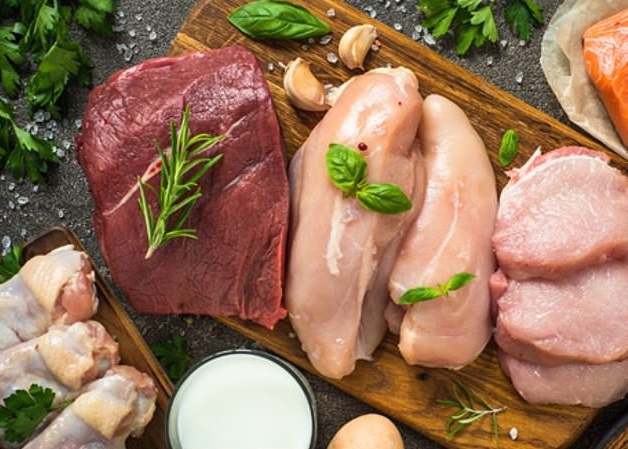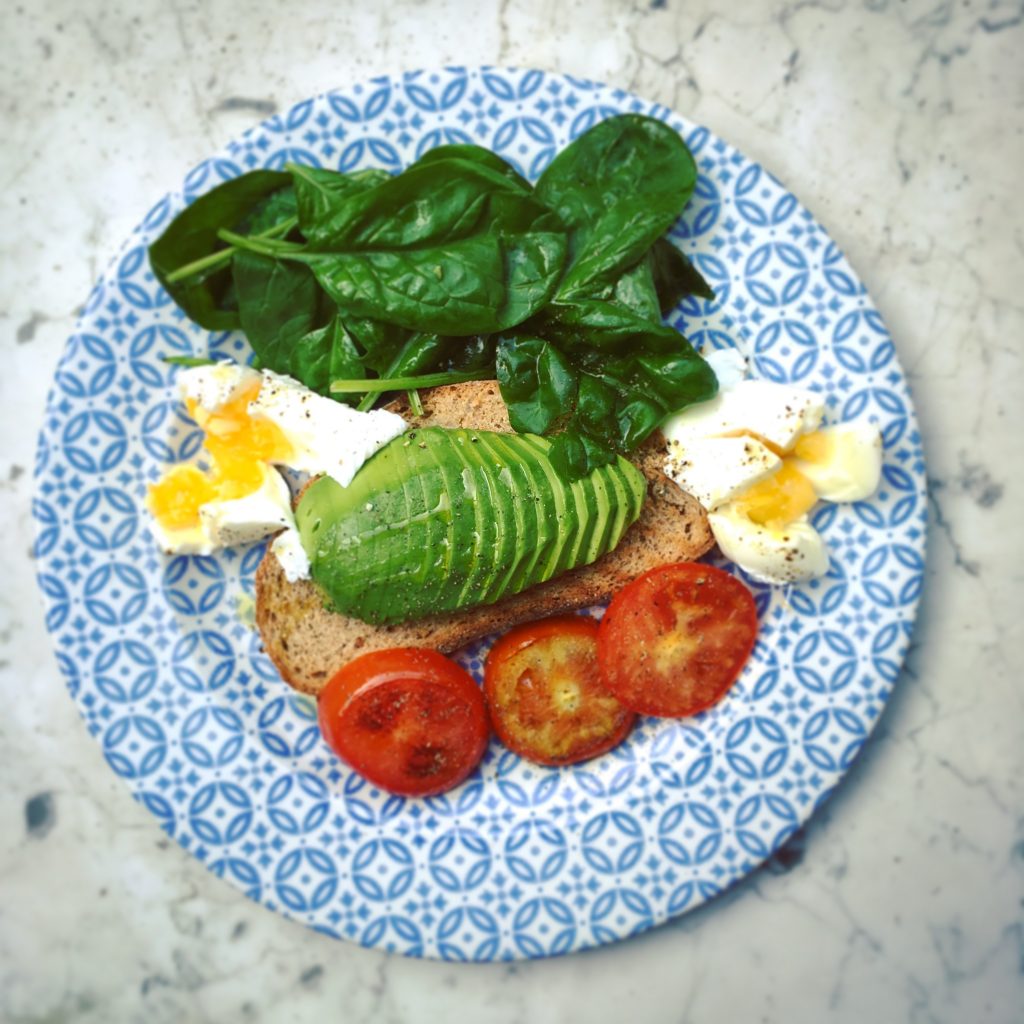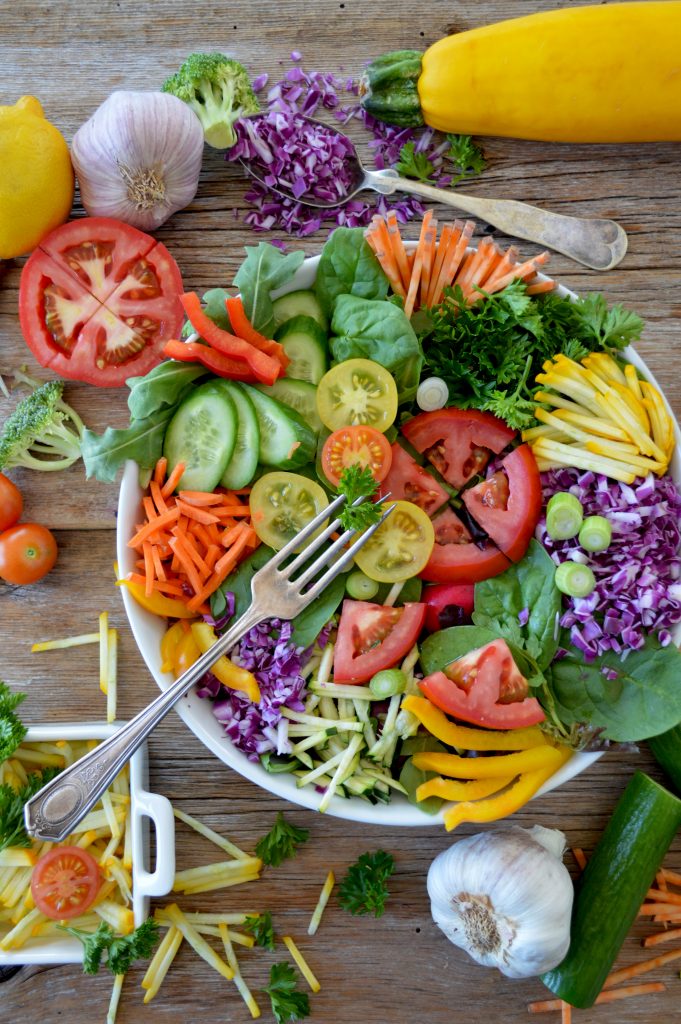Let me give you a quick overview of how your body works and teach you a few key facts about nutrients – how they are digested and what your body needs nutritionally to be healthy and to burn fat. This will help you understand why my Colour Code System works. No fads – just facts.
The word ‘diet’ simply means what you eat – or scientifically speaking, ‘your energy intake’. So, in truth, we are all on a diet. It’s the slimming diet mentality that’s the problem, because it involves deprivation or avoidance – often of valuable nutrients – for the sole purpose of losing weight and with little or no regard for the long-term impact on our health.
It’s very fashionable to base ‘diets’ on what our ancestors ate – specifically cavemen, who were hunter-gatherers. There are, of course, elements of this ‘diet’ that are good, but not the complete concept. The reason cavemen were slim was due as much to the fact that they were highly active physically, and that their diets contained no processed high-fat high-sugar foods, or indeed any excess of food. I really enjoy my food, so this sort of restrictive regime doesn’t appeal to me one bit.
When processed high-sugar high-fat foods are unavailable, our diets are automatically much healthier. One example of this was seen in the period during and immediately after World War II, when rationing was in force. Meat was in short supply and people had to rely a lot more on homegrown vegetables. There are elements of this postwar ‘deprivation’ lifestyle that would benefit us today. Engine fuel was also rationed, so although people didn’t have to chase their dinners like our paleo ancestors, they did have to walk everywhere instead of taking the car. It is no coincidence that the population at this time was slimmer and the incidence of heart disease was much lower.
The reality is that there are some good elements to most diets, but there seems to be a fixation with coming up with faddy, fashionable diets in which some obvious concepts are ignored for fear of being boring, or not ‘sexy’ enough to market. I will not bow to that pressure! Instead, I give you the information you need, and then teach you a simple system to make it work for you. One thing’s for sure, no more faddy dieting (and I’ll leave the ‘sexy’ bit to you!!)
You can calculate approximately how many calories you need to consume on a daily basis, but unless you are actually going to count every calorie you eat, there’s little point. In the Colour Code System, the focus is on eating foods that naturally keep you satisfied and when you do that, portion control regulates itself and you do not overeat.

Fats, carbohydrates and protein are the three main nutrients (excluding water) that your body needs to function. They work together to provide energy and on-going growth and repair. When eaten in the right amounts, and from the right sources, they provide us with protection from disease, slow down the ageing process, and give us vitality and longevity.
The amount of each nutrient that you need as an individual varies and is determined largely by your activity levels and your age. For example, athletes and more active people need more carbohydrates than sedentary people because they have a higher energy requirement – also weight loss is not an issue for them as most of the glucose they ingest is used up quickly and they don’t have to worry about the fat-storing effects of high blood sugar. Their lifestyle means they are fat burners.

My Colour Code System does all the balancing out for you and it also makes it easier to follow something when you trust it. It is made up of four food groups and this is the basic overview.
GREEN – Vegetables and fruit and most foods (excluding starchy carbs) that grow in the soil. 7-10 portions per day. Aim for minimum 2 per meal
PINK – Starchy carbohydrates – i.e. all grains and related products (pasta, bread, rice, cereals, etc.) plus potatoes. 1-3 portions per day. Always combine with a BLUE.
BLUE – Fats and proteins, including fish, meat, dairy, nuts, seeds, oils. 1-5 portions per day (various sizes) and have 1-2 with each meal and use as snacks.
RED – Sweets, cream, ice-cream, alcohol, sugar, refined honey, pastries, cakes, crisps, deep-fried chips, high-fat takeaway meals – food that has no nutritional benefit whatsoever (just empty calories). Optional irregular snacks Some foods contain strong elements of another group and a food can have a high glycaemic value or a low glycaemic value

This is not a faddy diet, this is a simple way to follow a diet that is full of vitality, will give you energy and naturally reduce cravings – and of course your waistline! It is designed to focus on getting you healthy and balancing your hormones and gut flora so that you become a natural fat burner. There are some recipes to get you started but when you really understand and use the Colour Code System you can adapt and choose the foods you eat based on what you know will work.

